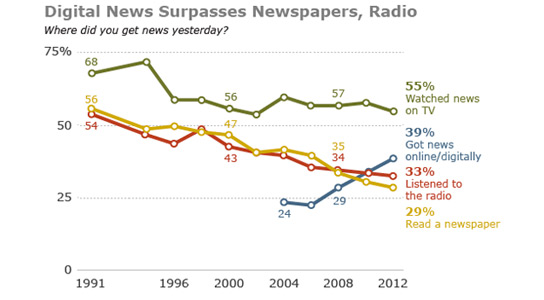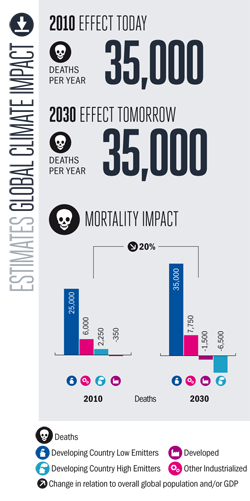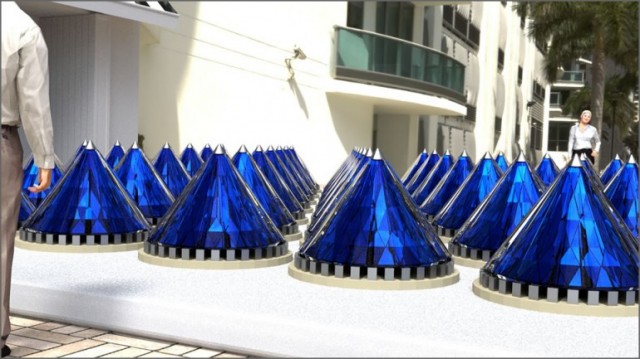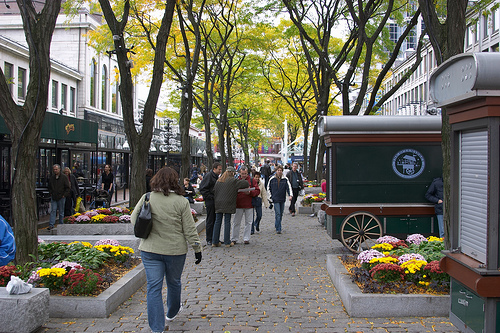This week’s headlines look at a way to feed a billion more of us without planting more crops, a climate change report that dooms 100 million of us, the change in the way we receive information is reaching a tipping point, new solar technology that produces 20 times more energy, and rethinking cities to make them walkable. As always I encourage you to comment, ask questions and provide input on topics I write about or feature. And should you come across an interesting technology or scientific breakthrough that you feel should be included in this blog please don’t hesitate to let me know. Enjoy the read!
Agriculture Update: Stop Food Losses and Feed a Billion More People
If we could halve food losses we could feed one billion more than we do today on Earth according to a study in Science of the Total Environment. What do the researchers at VU University Amsterdam, University of Bonn, and Aalto University mean by food losses? This is the amount of food that gets lost in the production chain from planting to harvesting to storage and distribution. Food losses are even more significant when you consider the resources that go into producing it including wasted cropland, water, fertilizer and energy. What is the total damage? We lose 614 kilocalories per person per day. If we didn’t have these losses we could produce 2,609 kilocalories of edible food daily for every person on the planet.
Climate Change Update: Are 100 Million Doomed?
Separating the fact from the science fiction in the climate change file is important. That’s why a new report authored by DARA, an independent organization focused on improving aid to vulnerable populations around the world needs to be understood when it makes the claim that 100 million of us will die by 2030 from climate change. Is the report suggesting that freakish weather events and rising temperatures will lead to sudden death for millions of us? No! Today 5 million die each year from bad air, hunger, and disease attributed to climate. With the population bubble climbing in the Developing World and with those countries having the poorest infrastructure and means to combat these consequences of rising temperatures, the report sees that 5 million growing to 100 million.
Communications Update: We Have Crossed the Threshold from Physical to Electronic Print
The latest Pew Research shows that in the United States more people learn about what’s happening in the world through electronic means rather than through newspapers and radio. Even television has become vulnerable to the Internet with 18 to 29 year old viewers watching less and less as they turn to online sources for information. The spread of smart phones is one of the reasons for this transformation.

Energy Update: Rotating Solar Panels – Net Result Lots More Energy Yield – Who Would Have “Thunk” It?
V3Solar is a game changer. Why? Because their unique solar panel design produces twenty times more electricity than flat panels. Each cell uses concentrated lenses, advanced electronics, a conical shape and rotation to alter not only the amount of light that can be converted to energy, but also the thermodynamics of the cells to ensure that they maintain an optimal temperature for photovoltaics.
Urban Studies Update: Building Cities That Are Walkable – What????
The B.E. Journal of Economic Analysis & Policy has published a study by researchers at San Francisco State University that looks at the future of “smart growth” design in urban settings and comes to the conclusion that cities should be designed around people, not automobiles. What is “smart growth?” It is building new urban settings with amenities and infrastructure that reduces automobile usage and, therefore, carbon emissions. Apparently a 10% increase in “smart growth” yields a 20% reduction in annual vehicle miles traveled. Smart growth amenities include:
- more compact urban design
- mixed residential and commercial land use
- a variety of housing styles and types
- pedestrian, bicycle and mass transit considerations over automobiles
- parks and forest canopies
- intensification in population per square kilometer resulting in less cost per capita for supporting infrastructure (roads, water, storm drains, utilities, parking lots, etc.)
The added benefits of “smart growth,” a healthier population, cleaner air and a more livable environment. For a field guide to the some of the most walkable cities in the world, go to Frommer’s website.
A Postscript
Lots of new subscribers this month! Remember to let me know if there is a topic, not yet covered by 21st Century Tech blog that you would like to see. If you have written an article that fits within the themes of this blog then let me know. Guest articles are welcome! Thank you for continuing to drop by.
– Len Rosen


















